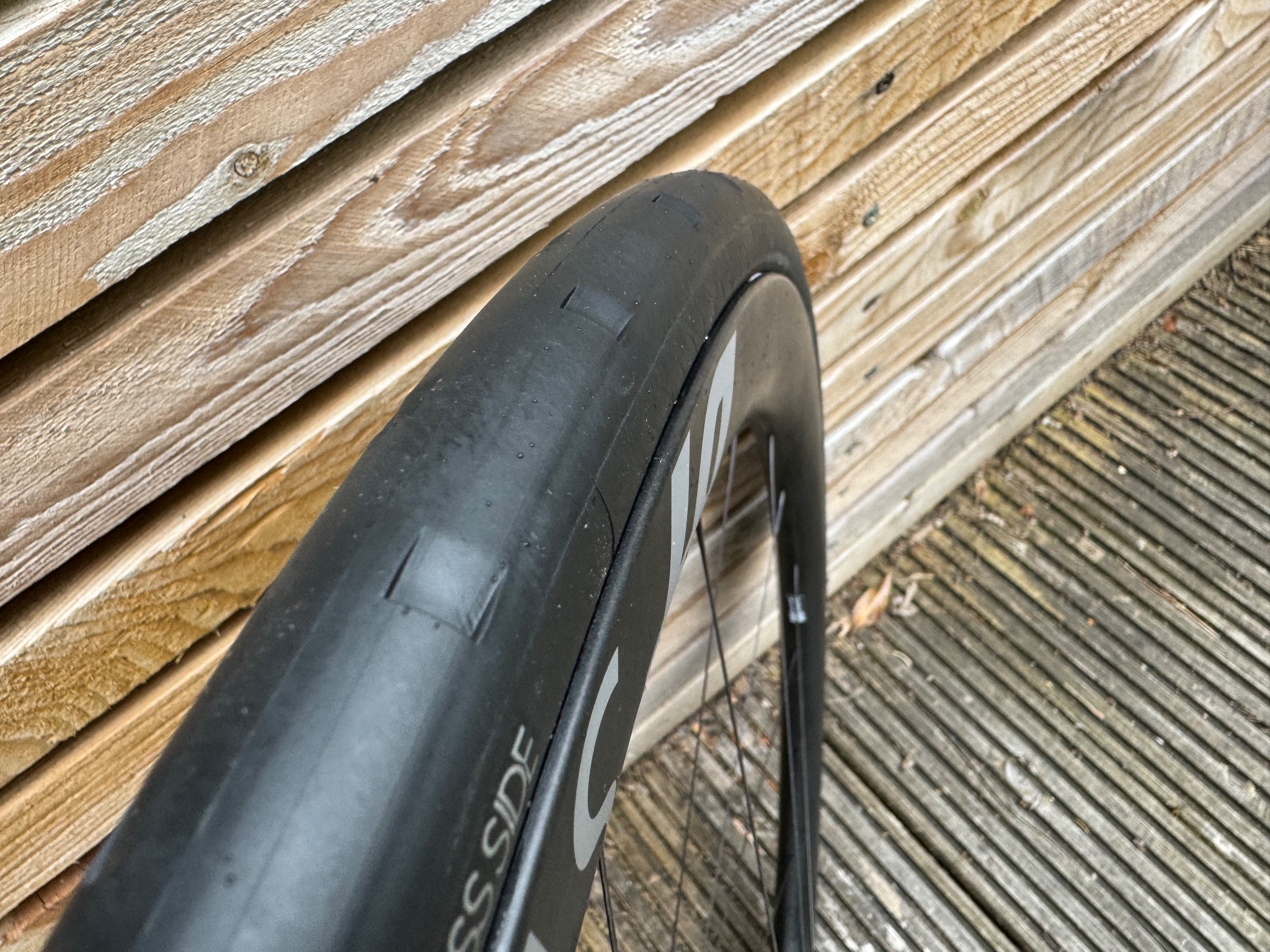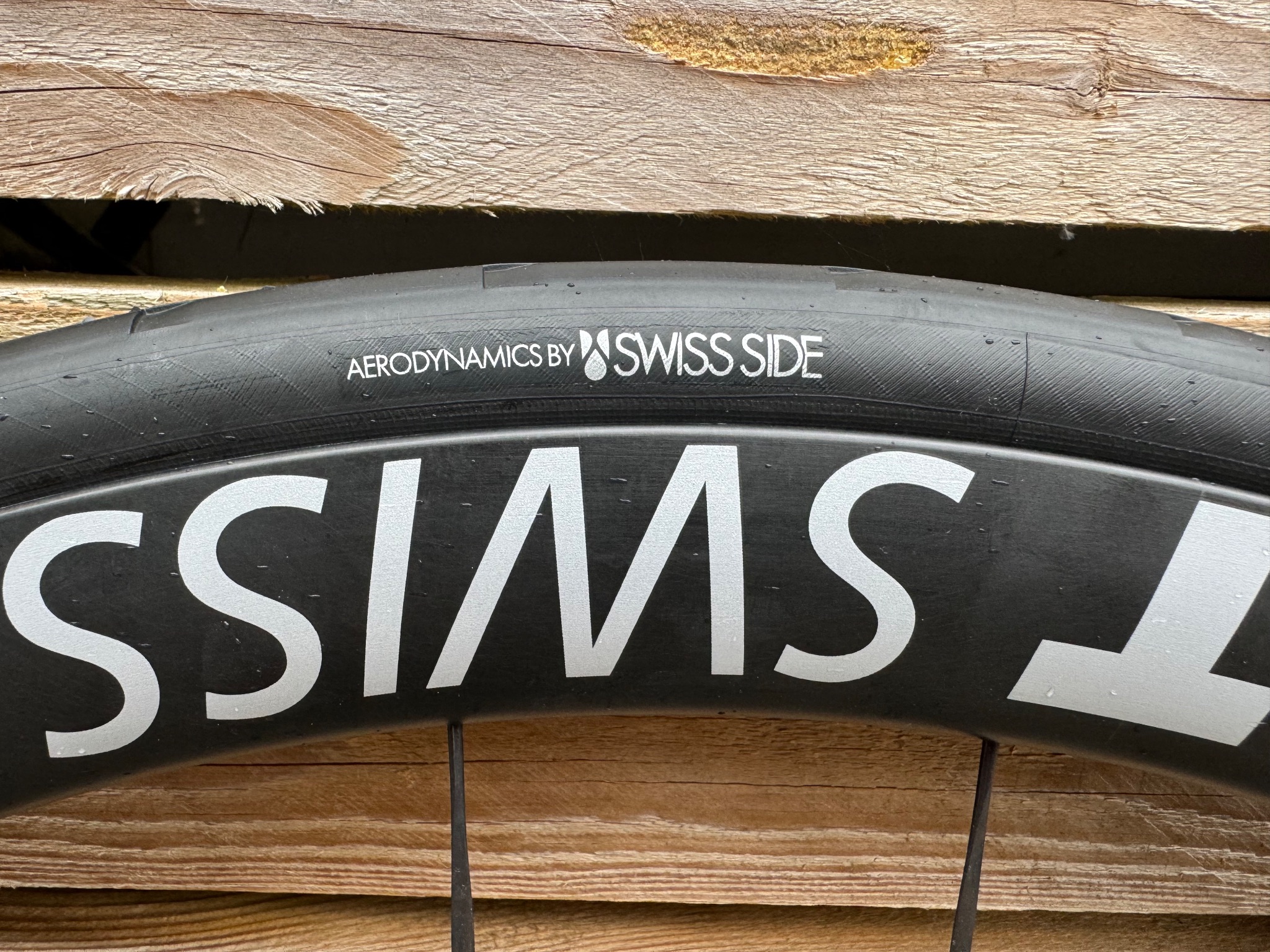Continental Aero 111 26mm tyre review: grippy on tarmac but slippy through the air
With its unique vortex generators, the Aero 111 looks and performs like nothing else on the market

An expensive race day tyre that performs as well as any of the similarly priced competition when it comes to grip, rolling resistance and puncture protection. But the Aero 111 comes with the additional bonus of a small boost in aero performance for no loss of performance anywhere else.
-
+
Innovative design
-
+
Claimed aero savings
-
+
Black Chilli compound is super grippy
-
+
A good tyre with additional gains, beyond just aero
-
+
No more expensive than the competition
-
+
Great puncture protection
-
-
A nightmare to fit
-
-
Aero savings are modest
-
-
Feel a little twitchy in crosswinds
You can trust Cycling Weekly.

The Continental Aero 111 tyre is, in many ways, very similar to the GP5000 line. It uses the same Black Chili Compound for grip and reduced rolling resistance, and the Vectran Breaker for added puncture protection. It’s only available as a front tyre and comes in 26 or 29mm with the 26mm weighing a claimed 250g but coming in at a very similar 252g on my scales.
Where things get different are on the exterior of the tyre. Designed with Swiss Side, Swiss aero experts across motorsport and cycling, the tyres have been designed with “48 precision-formed, vortex-generating cavities that create controlled turbulence, ensuring prolonged airflow attachment to the rim, resulting in reduced aerodynamic drag and improved crosswind stability”. This results in a sizable reduction in drag at higher speeds according to their own testing, saving up to 4 watts at 30kph and 20-degree yaw vs the GP5000S TR 25mm tyre, and nearly 20 watts saving at 45kph and 20 degrees yaw. It’s worth noting though that as speed increases, effective yaw angle decreases, so 20 degree yaw at 45kph is an extreme figure to encounter in most real-world testing.
Fitting and riding

Continental Aero 111 tyre with vortex generators clearly showing
As with any tyre, the first part of the review process is fitting it. I fitted these to some DTSwiss ARC 1100 DICUT DB 38 wheels, a pair that Continental actually developed the tyre to perform with! These wheels have been stubborn with tyres before, but the Aero 111 was a new level of difficulty to fit and required more forearm and grip strength than should be expected of any road cyclist. After much frustration and the donning of special rubber grip gloves, I was able to get the tyre on. Seating it was easily done with a track pump by removing the valve core, and it held pressure well throughout the day with not a huge amount of sealant.
Fitted to the DTSwiss front wheel, the tyre sits nicely flush with the rim, both of which are 26mm claimed and measured. The idea is that the tyre works with the rim profile to extend the effective rim depth while also creating turbulent vortexes to keep airflow better attached. In terms of claims, Continental says the tyre performs fractionally better than the GP5000 S TR on the same wheel at 30kph and 0-10 degrees yaw. When this increases to 10-20 degrees the Aero 111 saves 6 watts, and when the speed increases to 45kph and yaws 15-20 degrees the saving is a huge 18 watts. Taking a critical view of this though, as speed increases the effective yaw angle drops, so 15-20 degrees yaw at 45kph needs one hell of a crosswind. The 30kph figures however are far more realistic. Another claim is that the tyre is more stable in crosswinds with less of a stall, where air pressure changes suddenly and creates a jolt of movement.

The Aero 111 was developed with the help of DT Swiss and Swiss Side
Taking all this test data into consideration and applying it to riding on the road, it is hard to get any real quantifiable data as the conditions and circumstances are not controllable. The best I can provide is subjective feedback, but having spent a decade training and riding nearly 200,000km, I have become good at being very in tune with the equipment I use. It was interesting using the tyres on the DT Swiss wheels, as testing with Pirelli tyres revealed that these wheels were not the fastest in crosswinds and were subject to stalls, although they did not pick up the wind much due to being shallower. With the Aero 111 tyre on, the front felt like a deeper section wheel in crosswinds. This translates to feeling a tad faster, but also in gusty conditions it felt like they got caught by the wind more, although they remained stable. Again, subjective data is not a very accurate measure, and some speed gains could be because these tyres also perform well when it comes to rolling resistance. However, testing with the same equipment, bar the tyre, and accounting for a change in rolling resistance, average CdA on MyWindSock is a little lower with the Aero 111 than with the Pirelli. But this is still going to be prone to margin of error, especially with such small differences and so many uncontrollable factors of riding outside.
A tyre, however, also needs to be good at cornering and not be fragile. The Aero 111 performs exceptionally well across both of these areas. The Black Chili compound is as gripper as ever and the wheel sticks to the tarmac even when banking into corners at high speeds. The addition of the Vectran Breaker seems to work well as over the course of nearly 1000km it hasn’t had a single puncture or a nick in the tread, even with riding through persistent hedge trimmings. As a race day tyre set up combined with a GP5000 S TR rear tyre, the Aero 111 performs as well as any high end race tyre when it comes to grip, rolling resistance and puncture protection. The promise of a small but potentially tangible aero gain across a range of conditions just sweetens the deal.
Value

Even without the very obvious votex generators, the Aero 111 would still be a very competitive tyre, both in performance and price
At £89 the Aero 111 is not a cheap tyre. But when you consider that a Pirelli PZero RS Race is £85, a Vittoria Corsa Pro Speed is £90 and a Continental GP5000 S TR is £80, then the Aero 111 is not bad value. Add to that it is a front tyre so will last 2-3 times longer than a rear tyre and it is fairly good.
The latest race content, interviews, features, reviews and expert buying guides, direct to your inbox!
Ultimately, the performance is on par with these equally priced tyres, but the Aero 111 promises to add something that little bit more, marginal gain or not, you get a bit more performance for your money.
Conclusion
The Continental Aero 111 tyre is something fairly unique in the current market of performance bike tyres. Other tyres offer an aero gain but not to such an extent, especially in crosswinds. It performs exceptionally well when it comes to grip, rolling resistance and puncture protection when compared to other similarly priced performance tyres.
Where the Aero 111 offers something different though is promising to increase the aero performance of your wheel. It’s hard to quantify if it really does, but a few behavioural cues of the wheels in crosswinds suggest that it does improve aerodynamic performance in higher yaw angles.
This comes at a slight expense of a shallower wheel catching the wind like a deeper wheel, but the hope is that the improved aero performance for the weight of a shallower wheel will aid overall performance nicely.
Andy is a Sport & Exercise Scientist, fully qualified and experienced Cycling Coach, Sports Director, Freelance Writer, and Performance Consultant. He spent 3 years riding for a UCI cycling team and 7 years as a BC Elite rider, competing in prestigious events such as the Tour of Britain and the Volta a Portugal.
Graduating with a first-class honours degree in Sport & Exercise Sciences, he continues to pursue his interest in research in the field of Sport Science alongside managing his coaching business, ATP Performance. He also works as a Wind Tunnel operator and Performance Consultant at the Silverstone Sports Engineering Hub, working with individuals, teams, and businesses to optimise performance and develop products.
